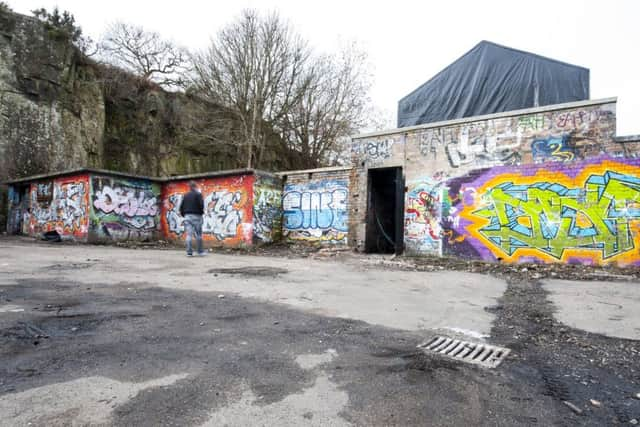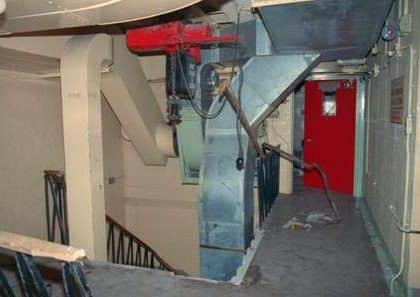Edinburgh's secret nuclear bunker prepares to open its doors


The structure built on the secluded site of Barnton Quarry was once a nuclear bunker, which included a three storey network of tunnels, hidden 100 feet below ground.
From quarry to Cold War bunker
The original quarry (which extracted stone for building materials) closed down with the outbreak of war in 1914.
Advertisement
Hide AdAdvertisement
Hide Ad

The site remained closed until the Second World War, when the Royal Air Force Fighter Command took it over as an operations room for the nearby Turnhouse airfield, which would later become Edinburgh Airport.
Things changed again in 1952, when the former control centre was redeveloped into a nuclear bunker during the Cold War.
The threat of nuclear war
A 30,000 square foot R4 type bunker was built in secret on the former quarry site, with a labyrinth of tunnels and control rooms extending over 100 feet below the existing building on the surface.


This was part of the ROTOR air defence system, which the British Government developed in the 1950s to counter any potential attacks from Soviet bombers.
The Barnton Quarry bunker was to act as the Sector Operations Centre, gathering information from radar stations across Scotland.
In the event of an attack, the Barnton Quarry crew would order RAF fighters to intercept the Soviet bombers before they entered UK airspace – but, luckily, this never happened.


As technology advanced, the ROTOR system soon became redundant, as it couldn’t transfer information quickly enough.
The quarry was abandoned again, but not for long.
Keeping the Queen safe
Advertisement
Hide AdAdvertisement
Hide AdCold War paranoia was high in the 1960s, and Edinburgh’s position close to Rosyth Naval Dockyard made it a likely target.


Barnton Quarry bunker was soon transformed into a Regional Seat of Government, which would keep around 400 politicians, military leaders and civil servants safe for up to 30 days in the event of a nuclear attack.
The bunker would also house the Queen and Royal Family, should they happen to be staying at Holyrood Palace at the time of attack.
There were water tanks, air filtration systems, food rations and communications networks in place to help people survive underground for a month, including a dedicated BBC studio to allow government broadcasts in the event of nuclear war.
Up until this point, the bunker had been kept a secret from the public, but in 1963 a group called Spies for Peace uncovered details of 14 Regional Seats of Government across the country.
Demonstrators from the Campaign for Nuclear Disarmament (as well as curious members of the public) quickly descended up on the main entrance to the bunker complex on Clermiston Road. Although Edinburgh locals were now aware of the bunker’s existence, they knew virtually nothing else about it. The facility remained open for another 20 years, but access to the bunker was tightly controlled.
As the threat of Cold War died down, the bunker ceased operations and was sold to Lothian Regional Council in 1983.
Advertisement
Hide AdAdvertisement
Hide AdIn 1987, it was then sold to a private property developer for £55,000. Before it could be redeveloped, though, two fires (in 1991 and 1993) destroyed much of the underground structure.
In the years that followed, some brave urban explorers headed on underground expeditions to uncover the secrets of the nuclear bunker, but aside from this it remained derelict and abandoned.
Inviting the public inside
The property was sold again in 2005 to the director of Scotland’s Secret Bunker, a restored nuclear bunker and museum in Fife. A long-term restoration plan is currently ongoing to remove traces of asbestos and return the bunker to it’s 1952 state. Volunteers have been working for years to clear debris, salvage fixtures and fittings, sandblast surfaces, clean graffiti and restore power to the complex.
It is expected that the Barnton Quarry nuclear bunker will officially open to the public for the first time in 2019.
This feature originally appeared in our sister publication iNews.